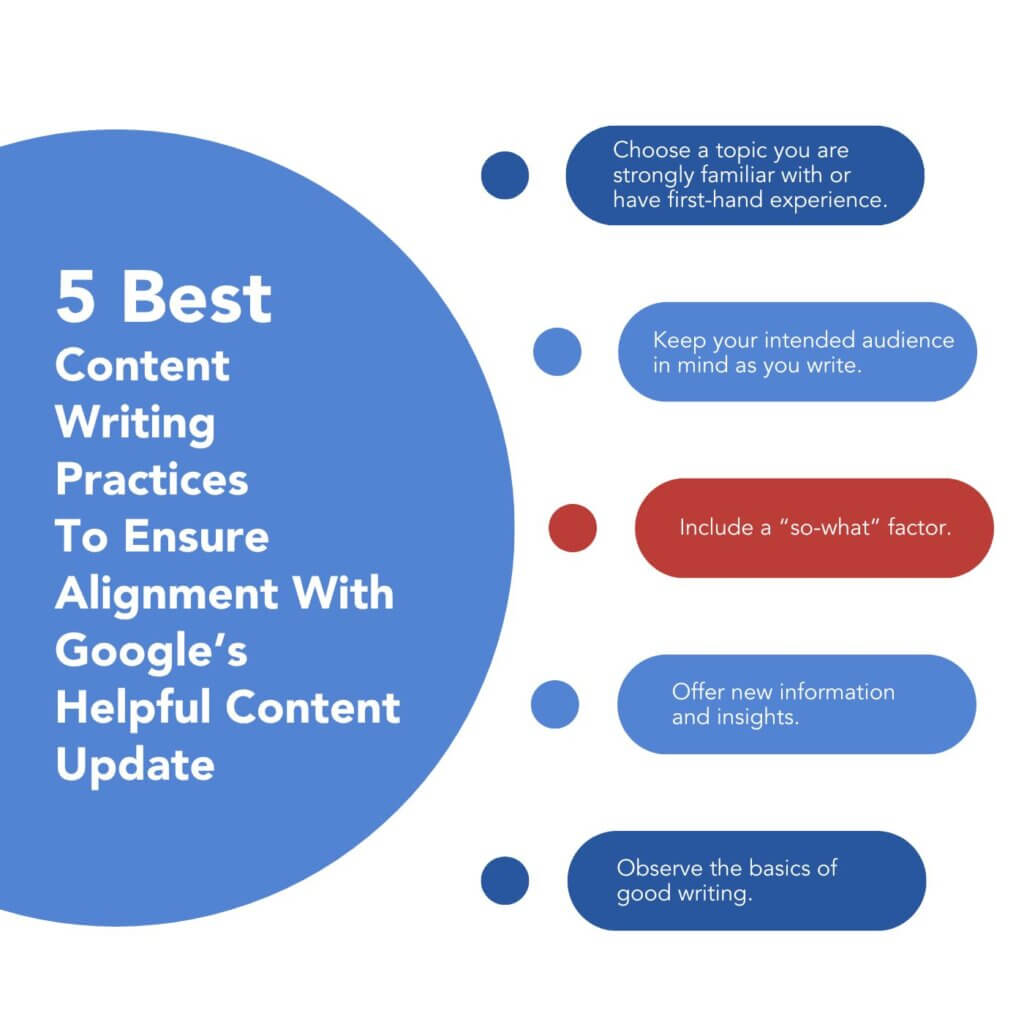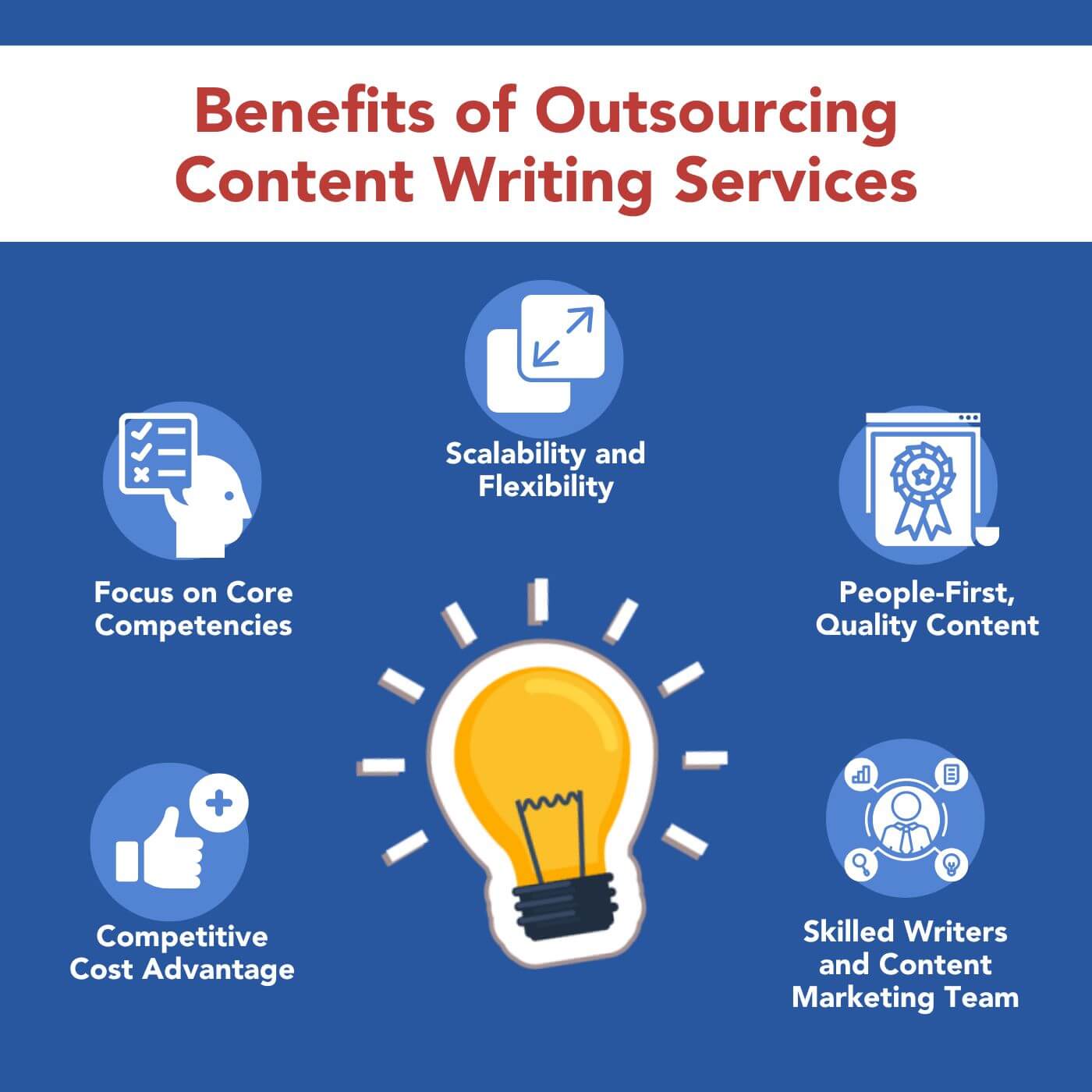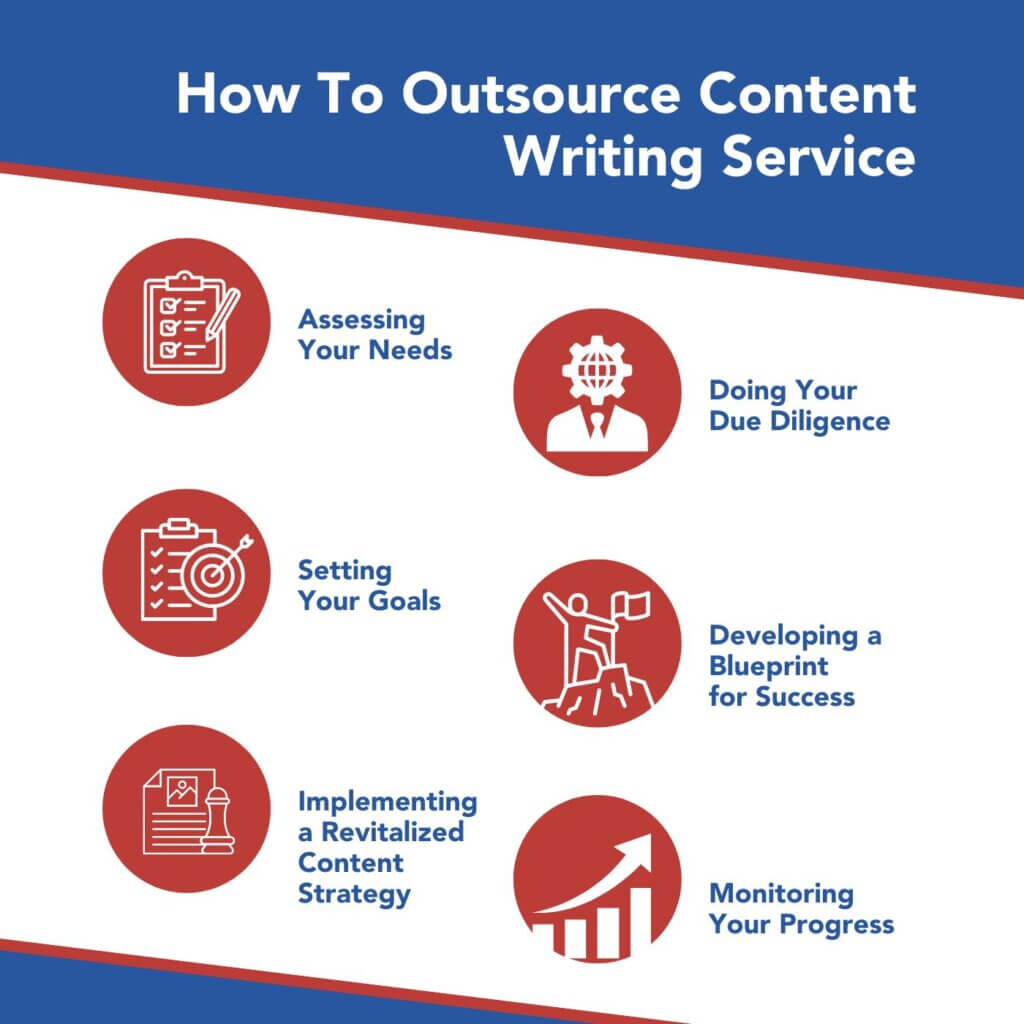
While there are other search engines online, there’s no debate that Google rules them all in terms of site traffic and popularity. Whether it’s basic research, online purchases, or brand reviews, Google is our go-to search engine.
The king of online content recently cracked down on poor content and black hat strategies as it finished rolling out what is said to be the decade’s biggest shake-up in the SEO landscape. How will this impact the future of digital marketing and what can businesses expect?
Let’s break down what this update could mean for your site and how you can navigate it with a strong combination of SEO and reliable content writing outsourcing provider.
8 FAQs About Google’s ‘Helpful Content Update’
We’re kicking things off with this quick FAQ rundown to help you learn exactly what the update is about.
When did Google’s algorithm update take effect?
After releasing an overview of the algorithm update on August 18, 2022, Google began its roll-out on August 25, 2022 which ended on September 9, 2022.
What drove Google to update its algorithm?
The algorithm update is part of Google’s broad initiative to ensure that users see more unique and insightful content written by people for people. It also aims to gradually weed out content that only serves to rank on search results.
What type of content does Google prioritize in its search results?
In its guidelines, Google emphasized the importance of people-first content that demonstrates expertise, authoritativeness, and trustworthiness.
What is people-first content?
People-first content simply means prioritizing your target reader’s needs over higher Search Engine Results Page (SERP) rankings.
This means getting to know your readers and addressing all their questions and discussing things in a language that’s easy for them to read. Additionally, people-first content also values unique insights and fresh perspectives.
What type of content should you avoid to rank highly on Google?
Avoid writing unhelpful content that is purely written for search engines, such as keyword-stuffed, inorganic spam, without actually satisfying the user’s search intent.
Which sites are affected by Google’s algorithm update?
The site-wide Google algorithm update will affect all websites. As of December 2022, Google expanded the global update to impact other languages, not just English.
Will websites affected by the new algorithm be penalized?
While Google did not reveal the algorithm’s specific impact on affected content and websites, it did mention that websites that contained large amounts of affected content would “notice a stronger effect.”
How can you ensure you’re creating successful content for Google?
Again, it all goes back to creating content for people by people, not for search engines.
5 Best Content Writing Practices To Ensure Alignment With Google’s Helpful Content Update

1.Choose a topic you are strongly familiar with or have first-hand expertise.
The simplest writing advice is still the best one. “Write what you know.”
The problem with writing about something we’re unfamiliar with is that we just end up mirroring what we read about it online, unable to bring any new insights or interesting perspectives. More often than not, writers tend to loosely plagiarize existing content because they have nothing more to add.
People gravitate toward first-hand accounts that are relatable, but at the same time, still command authority, expertise, and a depth of knowledge with first-hand accounts. As writers, our job is to find the middle ground between being engaging but not bringing anything new to the table, and being informative but sounding humdrum or monotonous.
A great way to do so is by framing the story in an angle that you are comfortable discussing. This is where people-first content comes in. It’s all about capitalizing on human experience to stand out from the sea of content churned by lackadaisical writers and AI generators. For instance, if you are writing about a company, don’t just toe the party line. Buy its products and avail its services to get a sense of the brand for yourself.
Similarly, if you’re writing about an industry, research alone won’t suffice. Find a way to immerse yourself in it so your content stays organic.
While your unique POV is important, staying in lane is just as crucial when it comes to SEO ranking, so remember to always remain true to what you promised your readers.
READ MORE: Top 8 Must-Know Digital Content Marketing Strategies To Help Fuel Brand Awareness and Growth in 2022
2. Keep your intended audience in mind as you write.
Another important tip all writers keep close to heart: Know your audience.
Gone are the days of shot-in-the-dark mass marketing. Whether it’s Gen Z and millennial shoppers or families and the baby boomer generation, these days, ad targeting, social media algorithms, and search engine optimization make it easier to reach our specific target market. Our role is to ensure that the content we create resonates with them.
How do we do this? By adjusting our voice to fit our brand – our products, services, and values. We can’t expect older generations to know Gen-Z language, and that goes for the opposite.
However, age isn’t the only thing we have to take into account. Race, social class, occupation should also factor into our content.
It’s not just about semantics either, knowing your readers’ needs also plays a huge part in it.
For instance, if we’re marketing a product that targets families, we can emphasize that it’s economical and easy-to-use. If we’re targeting an edgier Gen-Z or yuppie crowd, we can mention that it’s eco-friendly, cutting-edge, or artisan.
Knowing our target audience is about speaking their language and addressing their needs.
3. Include a ‘so-what’ factor.
So, we’ve locked in our topic and gotten to know our intended audience, now what?
It’s time to reel them in with your “so-what” factor – the key idea they will be taking away from your content. What’s in it for your audience?
Keep in mind your target market’s needs and play your strengths to that. From competitive pricing and promotional discounts to social entrepreneurship and brand activism, giving the readers what they want is one way to boost your SEO ranking and sales conversion rate.
Create demand by raising problems that your target demographic face, and offering your products and services as a solution. Flesh out your brand values so they know what you stand for.
If you’re marketing eco-friendly, green products, you can zoom out, broaden your perspective and tackle how it can help mitigate the impact of climate change. You can also discuss how your brand supports local communities and marginalized sectors.
Whether you’re an up-and-coming start-up or an industry leader, don’t be afraid to tell your story. Share your company culture and why they should support it.
However, no matter how big your idea gets, keep the goal of your article in mind. As you end your piece, circle back to that, regardless if it’s marketing a product, or raising awareness about your brand.
READ MORE: What Role Does Content Writing Play in Your E-commerce Sales Funnel?
4. Offer new information and insights.
There are typically thousands if not millions of results for every search query on Google. To get a coveted spot on the first page, we have to offer something that other pages don’t.
Check out the content of your competitors, aren’t they all saying pretty much the same thing?
Stand out by framing things in a unique perspective. Make surprising connections about seemingly unrelated things, challenge conventional wisdom with trailblazing ideas, and see the forest for the trees.
But always back your claims with facts and data. Research – but don’t let your readers get bogged down by numbers. Humanize abstract concepts with relatable real-world examples.
When people research about a topic, they want the latest information available, so stay on top of their search results by staying current. Create engaging content about emerging market trends or anchor your content on trending topics, but make sure that it’s still angled in a way that’s relevant to their searches.
5. Observe the basics of good writing.
Always go back to the basics of good writing – clarity, cohesiveness, flow, and grammar.
Regardless of your ground-breaking insights and ideas, if it’s hard-to-read, riddled with grammatical errors, or highfalutin when it doesn’t have to be, it’s still bad content.
Introduce a thesis or a central idea that you will discuss. Create an outline to help you plot out points that support your thesis. Set a word limit not just for the entire article, but for every section as well, so you are able to discuss each subtopic with just the right amount of detail.
Make sure that your ideas flow naturally to the reader by writing cohesively.
Apply your brand voice or the appropriate tone of writing that suits your target market. Circle back to your thesis and create a strong call to action or conclusion.
Once you’re done, re-read, proofread, and edit as you go.
Does This Mean You Can Forget About SEO and Existing Core Updates?
By all means, no. People-first content and Search Engine Optimization (SEO) practices go hand-in-hand in digital marketing.
But, first things first, what exactly does SEO do? As the word optimization suggests, it enhances your own content to make it more appealing to search engines. SEO specialists do this by leveraging their skills in keyword research, backlinking, and titling, as well as strictly following guidelines to ensure that out copies and landing pages generate traffic and rank on search engines.
SEO casts the fishing net for your target market, and engaging, quality content pulls them in. They cannot exist without each other.
People-first content won’t be discoverable to your market without SEO practices. Meanwhile, if you have poor content, SEO alone won’t guarantee site hits, much less sales conversion.
Our advice: leverage both to boost your customer’s browsing experience. Increase visibility with SEO and readability, as well as conversion rates, with people-first content.
Benefits of Content Writing Outsourcing
On top of juggling the daily responsibilities of running a business, companies also have the added burden of marketing their brand online.
Even with an in-house team of content creators or a freelance content writer onboard, businesses might find that they’re still too short-staffed to rival the content of major players.
Companies that do struggle with this challenge can outsource content creation. Content outsourcing would allow them to leverage a pool of experienced writers and a dedicated content manager for content creation, content editing, and content marketing.
Let’s take a look at the top advantages of outsourcing content writing.

- Competitive Cost Advantage
Cost efficiency still remains as the biggest driver of outsourcing.
Companies turn to outsourcing for reduced overhead, and operational costs. By contracting out certain business processes, they’re passing on recruitment, hiring, and onboarding expenses, as well as other incidentals such as taxes and benefits to outsourcing companies.
Businesses that outsource also take advantage of more competitive labor costs and more economical real estate costs in offshoring countries to drive savings.
- Focus on Core Competencies
An average article may take only minutes to read, but it takes hours to write.
Content writing is a very time-intensive process. Any good writer knows that it can’t be rushed, a single blog post can take upwards of a day to research, write, and edit.
Who has the time? Certainly not a busy business owner.
Optimize the value of your time by working with professional writers so you can focus on growing your business.
- Scalability and Flexibility
Outsourcing content creation will also help you keep pace with industry demands, seamlessly enabling you to scale your content production up and down as you need to.
Additionally, since outsourcing firms work with multiple writers at a time, they can afford to change their writing style to find which one best suits their target demographic.
- People-First, Quality Content
While most people can write, not everyone is a writer.
Fortunately, outsourcing your content writing can guarantee high quality content every time.
Outsourced writers are master wordsmiths who can create content and copies with a quick turnaround time, ensuring maximum productivity for your digital marketing.
- Skilled Writers and Content Marketing Team
In the face of a labor shortage that plagues all industries, businesses that struggle to find freelance content writers can leverage content outsourcing to tap into a global pool of experienced writers.
6 Steps for Content Writing Outsourcing

1.Assessing Your Needs
Before you can even begin to start scouting firms that provide content writing services, you should first identify pain points in your content marketing strategy that you want to address.
Do you want to rebrand, refocus your target demographic, broaden your reach, or amp up your visibility? How many articles do you need every month? How many writers do you need to accomplish this?
These are just a few things you need to consider when you outsource your content writing.
2. Doing Your Due Diligence
A quick Google search for outsourcing companies won’t do.
Since you’ll be working closely with their team, it’s important that their company culture and values align with yours. Another thing that you should also factor into your decision is your budget.
However, keep in mind that while outsourcing can drive down cost, quality content still comes with a price. You are working with professional writers who know the value of their work.
Check out your prospects’ track records with past clients. Or better yet, test-drive the partnership by delegating a few simple tasks to determine if they can deliver their promised results.
3. Setting Your Goals
The key to achieving your targets is setting SMART (specific, measurable, attainable, realistic, and time-based) goals and expectations between your in-house team and your team of outsourced writers.
Establish clear delineations on your roles and make sure that you’re on the same page to avoid any miscommunication.
4. Developing a Blueprint for Success
Know that you’ve established your goals, your partner can propose a scalable and customizable solution that’s tailored to your needs.
They’ll introduce a strategy that can be smoothly integrated into your operations. Your outsourced team will also address other pain points that you may have missed in your own evaluation.
They will also take charge of training your outsourced writers to ensure that their content will meet your standards and target market’s preference.
5. Implementing a Revitalized Content Strategy
A strong client-BPO relationship is critical in this part of your outsourcing journey.
Remember that their content writing projects are a representation of your brand. As such, they need a deep understanding of your company, industry, and values.
Arm your outsourced writers with knowledge bases, pitch decks, and other resources that can help immerse them in your business. This will help them create more organic, people-first content for your brand.
Close collaboration will also help your partner better strategize your content calendar, so your digital marketing stays cohesive and aligned to your business goals.
6. Monitoring Your Progress
Your outsourcing partner will closely track site analytics to ensure that you are hitting your growth targets based on the goals you’ve set — and make necessary changes to help you reach larger audiences and higher conversion rates.
Embrace Google’s Algorithm Update With Quality, People-First Content
From improving your site’s SERP rankings and organic traffic to boosting brand recall and revenues, there are a multitude of ways exceptional content can propel a company to new heights of success.
Dominate your industry with content writing outsourcing. SuperStaff leverages its expertise to guarantee better customer engagement and increased profitable actions. Work with a team of expert writers who seamlessly balance SEO requirements and readability to create compelling content.
Reach out to us today so we can start your branding and story-telling journey together.






